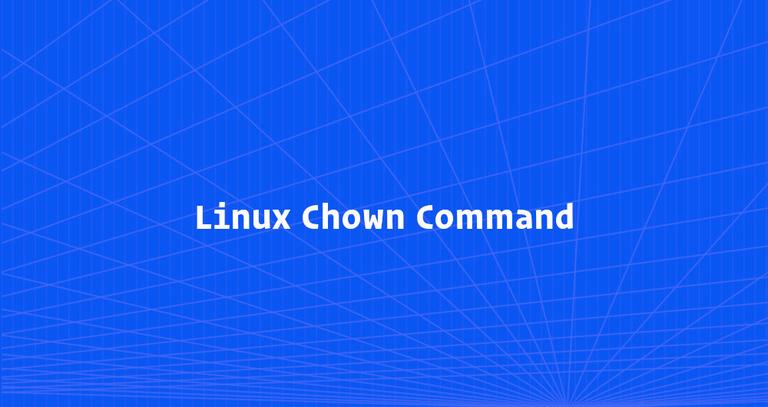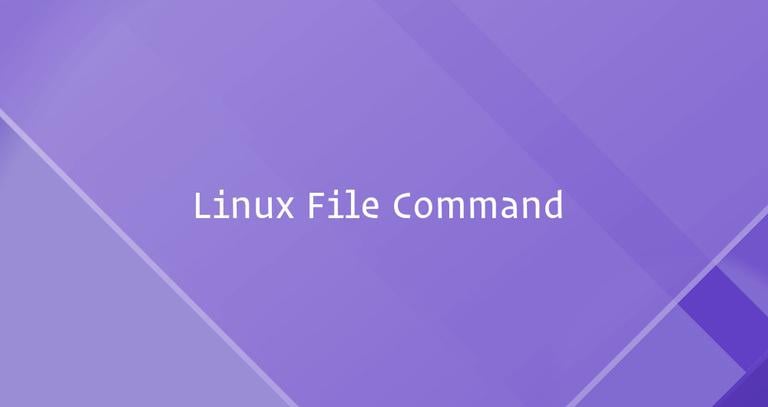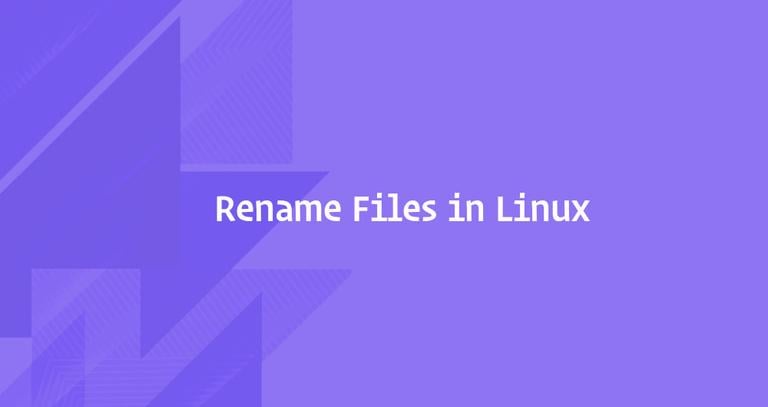Chown Command in Linux (File Ownership)
Updated on
•6 min read

The chown command allows you to change the user and/or group ownership of a given file, directory, or symbolic link.
In Linux, all files are associated with an owner and a group and assigned with permission access rights for the file owner, the group members, and others.
This tutorial will show you how to use the chown command through practical examples.
How to Use chown
Before going into how to use the chown command, let’s start by reviewing the basic syntax.
The chown command expressions take the following form:
chown [OPTIONS] USER[:GROUP] FILE(s)
USER is the user name or the user ID (UID) of the new owner. GROUP is the new group’s name or the group ID (GID). FILE(s) is the name of one or more files, directories, or links. Numeric IDs should be prefixed with the + symbol.
USER- If only the user is specified, the specified user will become the owner of the given files. The group ownership is not changed.USER:- When the username is followed by a colon:, and the group name is not given, the user will become the owner of the files, and the files group ownership is changed to the user’s login group.USER:GROUP- If both the user and the group are specified (with no space between them), the user ownership of the files is changed to the given user and the group ownership is changed to the given group.:GROUP- If the User is omitted and the group is prefixed with a colon:, only the group ownership of the files is changed to the given group.:If only a colon:is given, without specifying the user and the group, no change is made.
By default, chown doesn’t produce any output on success and returns zero.
To find out who owns a file or what group the file belongs to, use the ls -l
command:
ls -l filename.txt-rw-r--r-- 12 linuxize users 12.0K Apr 8 20:51 filename.txt
|[-][-][-]- [------] [---]
| |
| +-----------> Group
+-------------------> Owner
Regular users can change the file group only if they own the file and only to a group they are a member of. Administrative users can change the group ownership of all files.
How to Change the Owner of a File
To change the owner of a file, use the chown command followed by the user name of the new owner and the target file as an argument:
chown USER FILE
For example, the following command will change the ownership of a file named file1 to a new owner named linuxize:
chown linuxize file1To change the ownership of multiple files or directories, specify them as a space-separated list. The command below changes the ownership of a file named file1 and directory dir1 to a new owner named linuxize:
chown linuxize file1 dir1The numeric user ID (UID) can be used instead of the username. The following example will change the ownership of a file named file2 to a new owner with a UID of 1000:
chown 1000 file2If a numeric owner exists as a user name, the ownership will be transferred to the user name. To avoid this, prefix the ID with +:
chown 1000 file2How to Change the Owner and Group of a File
To change both the owner and the group of a file use the chown command followed by the new owner and group separated by a colon (:) with no intervening spaces and the target file.
chown USER:GROUP FILE
The following command will change the ownership of a file named file1 to a new owner named linuxize and group users:
chown linuxize:users file1If you omit the group name after the colon (:), the group of the file is changed to the specified user’s login group:
chown linuxize: file1How to Change the Group of a File
To change only the group of a file, use the chown command followed by a colon (:) and the new group name (with no space between them) and the target file as an argument:
chown :GROUP FILE
The following command will change the owning group of a file named file1 to www-data:
chown :www-data file1Another command you can use to change the group ownership of files is chgrp
.
How to Change Symbolic Links Ownership
When the recursive option is not used, the chown command changes the group ownership of the files to which the symlinks point, not the symbolic links
themselves.
For example, if you try to change the owner and the group of the symbolic link symlink1 that points to /var/www/file1, chown will change the ownership of the file or directory the symlink points to:
chown www-data: symlink1Chances are that instead of changing the target ownership, you will get a “cannot dereference ‘symlink1’: Permission denied” error.
The error occurs because, by default, on most Linux distributions, symlinks are protected, and you cannot operate on target files. This option is specified in /proc/sys/fs/protected_symlinks. 1 means enabled, and 0 is disabled. We recommend not to disable the symlink protection.
To change the group ownership of the symlink itself, use the -h option:
chown -h www-data symlink1How to Recursively Change the File Ownership
To recursively operate on all files and directories under the given directory, use the -R (--recursive) option:
chown -R USER:GROUP DIRECTORY
The following example will change the ownership of all files and subdirectories under the /var/www directory to a new owner and group named www-data:
chown -R www-data: /var/wwwIf the directory contains symbolic links, pass the -h option:
chown -hR www-data: /var/wwwOther options that can be used when recursively changing the directory ownership are -H and -L.
If the argument passed to the chown command is a symbolic link that points to a directory, the -H option will cause the command to traverse it. -L tells chown to traverse each symbolic link to a directory that is encountered. Usually, you should not use these options because you might mess up your system or create a security risk.
Using a Reference File
The --reference=ref_file option allows you to change the user and group ownership of given files to be the same as those of the specified reference file (ref_file). If the reference file is a symbolic link, chown will use the user and group of the target file.
chown --reference=REF_FILE FILE
For example, the following command will assign the user and group ownership of the file1 to file2
chown --reference=file1 file2Conclusion
chown is a Linux/UNIX command-line utility for changing the file’s user and group ownership.
To learn more about the chown command, visit the chown man
page or type man chown in your terminal.
If you have any questions or feedback, feel free to leave a comment.


